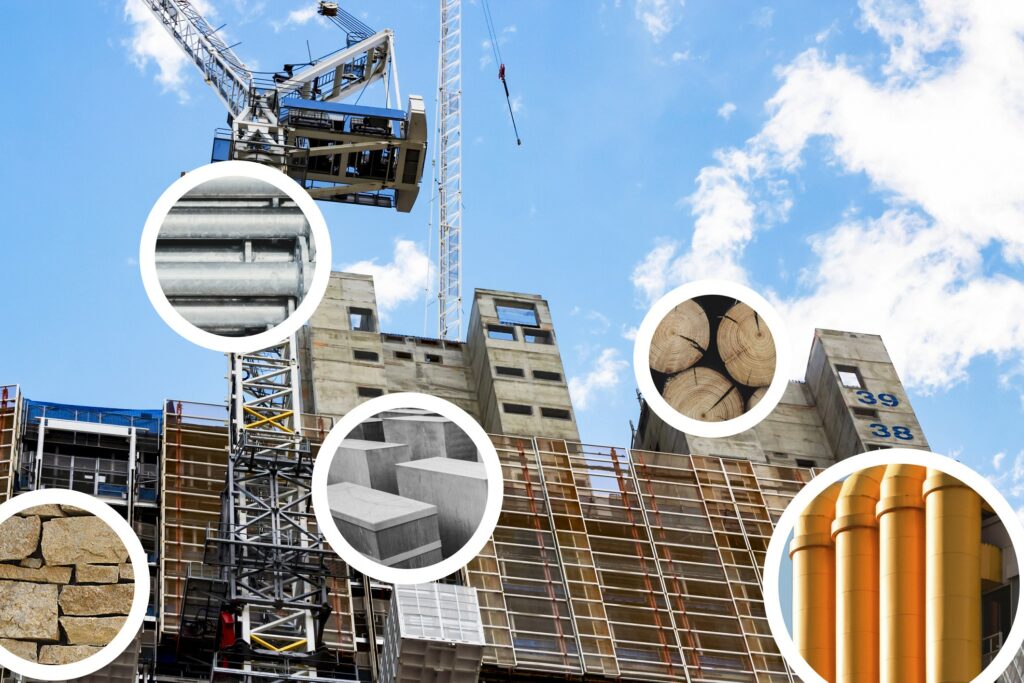https://www.accordantco.com/content/construction-collaboration-technology/
This post explores the increasing capability, benefits, and opportunities for cross-industry collaboration to improve building material products, building processes, and building value.
In today’s building world, cross-industry collaboration (or the lack thereof) is a reflection of one of building’s many challenges. BuildUSA, the Prototype Initiative, and Optimized building all presuppose effective collaboration among teammates. Building is all about getting the right people, in the right place, at the right time, with the right materials, tools, and information, so the work can be completed correctly the first time.
In building, almost all work needs to be coordinated between multiple subcontractors (e.g., carpenter, drywaller, electrician, plumber, mechanical, to name just a few). The materials for their work may come from dozens of suppliers and a much greater number of manufacturers. Often, these disciplines work concurrently, as long as the location and timing of material installation is properly coordinated and documented. Sometimes, each discipline can work independently, and any problems that arise will only affect them. But, frequently, two or more companies must perform closely coordinated work in a shared space or region of the building. In this scenario if any one company is not properly prepared with staff, materials, tools, and proper direction, then all the companies involved in the project are negatively affected. This simple scenario displays the dysfunction and inefficiencies experienced on every construction site. Both off-site and onsite, cross-industry collaboration is at the center of creating significant improvements in the building process and product.
Another important area of cross-industry collaboration is on new building material development. In particular, the growing inter-disciplinary potential of Construction Assembly Modules (CAMs). As introduced in “Systems, Standards, Templates, Workflows & Modules” and “Modularity,” building has much to learn from other industries when it comes to developing and implementing larger, interdisciplinary modules that become the “Basis of Design” for future buildings of all types, Optimized, Hybrid, Iconic, or Boutique. Our current division of labor and union regulations creates significant friction and challenges. Developing a large vocabulary of design and construction elements that integrate multiple disciplines into standard elements will create design and construction solutions that will improve schedules, costs, and product quality.

This is certainly a serious goal for the building industry. But, you may ask, how will these interdisciplinary solutions evolve? Will existing building suppliers integrate their production, creating collaborative teams and sharing materials, space, and resources? Or does an entirely new building material supplier need to be formed to serve as the responsible party for assembling and distributing CAMs to the construction site for final assembly and construction? Katerra, which went bankrupt and whose assets were purchased by VBC, represents the latter. It was a startup that was trying to create an entirely new building material production and distribution platform from scratch. VBC and Dirrt represent two other entries into this space. Perhaps a more interesting question is what will the major legacy building material suppliers do? Will five or six existing manufacturers look into the future and decide it is in their best interest to create a business understanding with other building material suppliers and combine their individual products into CAMs? In either scenario, the CAMs will be sold into the growing modular and Optimized building markets.
Going forward, both options are on the table. The first companies to figure out how to create a growing library of CAMs that are adopted by the A/E/C industry as the “Basis of design” for new modular and Optimized buildings will be at the forefront of a new growth opportunity in the Building Industry.
A third important area of cross-industry collaboration is data Standards, Templates, and Workflows (STWs). Today, even in the best run, most high-profile projects, a huge amount of time is spent coordinating the STWs between the primary participating A/E/C/M companies. It requires a huge effort to establish the protocols that ensure companies can collaborate within each other’s files, communication, and authorization processes. Cloud-based collaborative environments such as BuildUSA’s CDE +BCE enable seamless collaboration and data sharing among different companies. Collaborative environments will allow companies to create and share a set of common “Standards, Templates and Workflows”. And dramatically improve project efficiency and quality in the near term.
The current industry best practice, has data generated by architects, engineers, and other specialty consultants is stored in models that represent design intent. This data is then re-created in shop drawing models by the specific specialty vendor performing the work. Which is then reviewed by the overseeing A/E/C team. Upon completion of the project, this same data is rarely organized and exportable into CMMS systems that can then monitor and manage the on-going work of building and asset management. The BCE environment will provide solutions to this vicious cycle.
Effective cross-industry collaboration will organize project data to ensure that the data is secure and easily shareable across parties and cloud platforms. The technology, business agreements, and culture that combine to create this collaborative environment will provide significant improvements in project efficiency and quality. This will be particularly true in Optimized building projects. The standardization built into the design and construction process for Optimized buildings, as well as the cloud-based collaborative environments used to execute Optimized buildings, will create extraordinary opportunities for cross-industry collaboration, efficient projects, and high-quality products.
